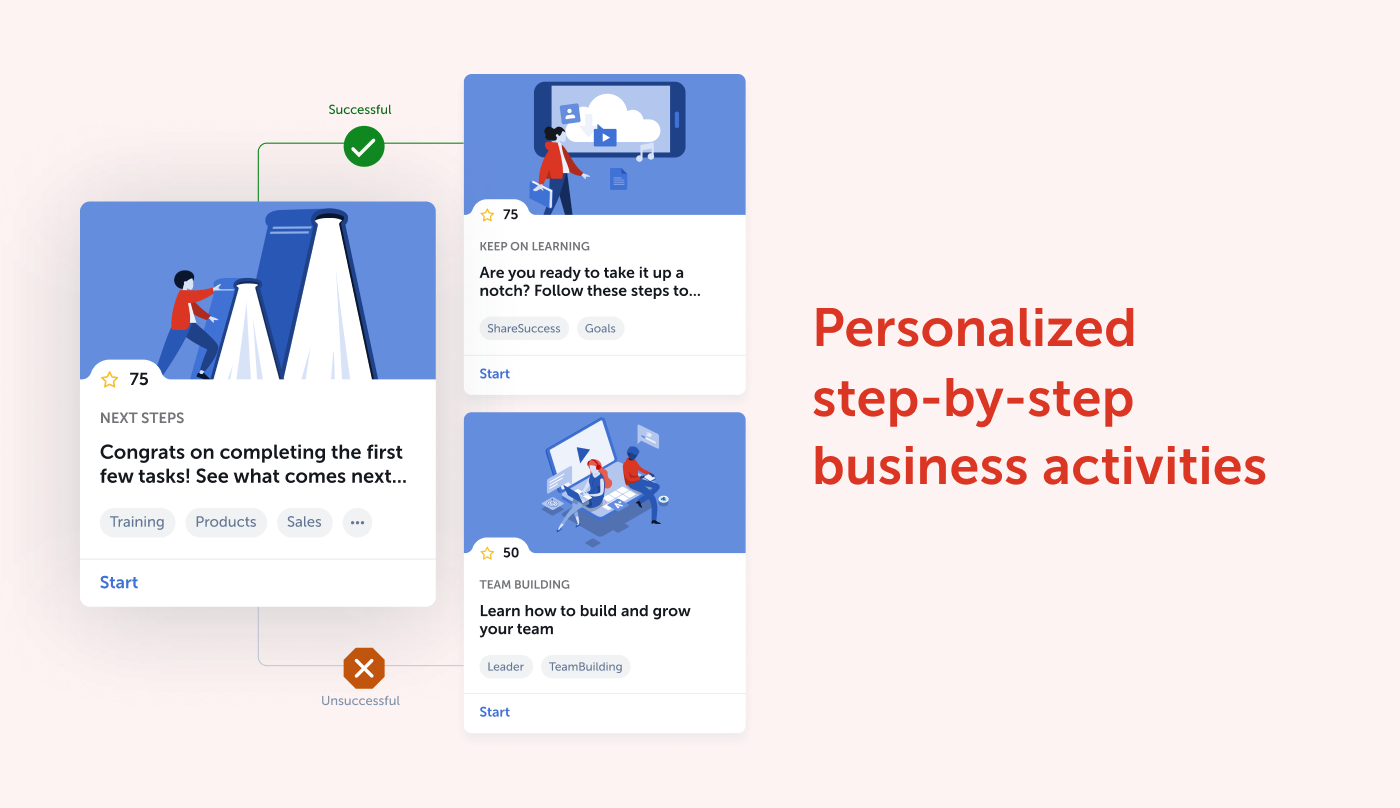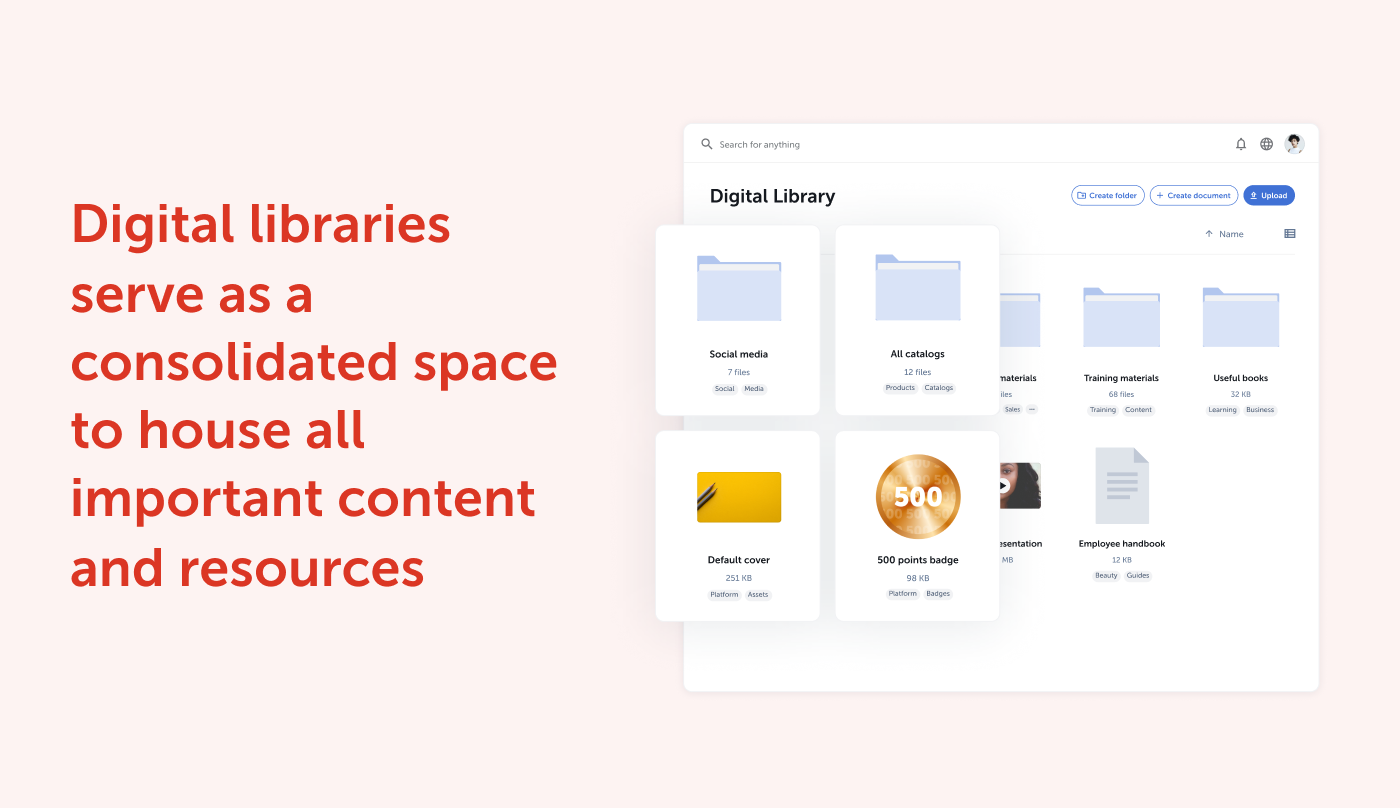Taking a Virtual-First Approach in a Virtual-First Workplace: How to Empower a Remote Workforce with the Right Tools
94% of Employees Wouldn’t Quit if the Employee Learning Opportunities Were Right
‘Lifelong learning is becoming an economic imperative’ – reads the title of a 2017 report from The Economist. Although the report dates back to 2017, this sentiment remains highly relevant today – globally, reskilling and upskilling tops the priority list for pros in the learning and development (L&D) industry. Today’s workforce has come to expect opportunities for training and development as a standard – LinkedIn’s 2019 Workforce Learning Report found that 94% of employees say that they would stay at a company for a longer period of time if that company invested in helping them learn.
The COVID-19 pandemic has given us the opportunity for a reset – to reimagine the ways in which we work and learn. As remote and distributed work continues to flourish, and we step away from the carefully controlled corporate working environment, there is the opportunity to provide new learning experiences – ones that are highly personalized and more in tune with the digital environment.
Here are some tips from Rallyware on how your organization can carve out moments for employee learning to occur, each and every day.
Tailor the learning experience to the individual employee
Just like teachers often adjust their approach depending on the learning needs of their students, the same mentality applies to individuals and teams in the workplace – there is a need for employers to understand their employees, in order to better connect with them. What motivates and drives them? Do they prefer working alone in a quiet space, or do they thrive in a competitive team environment?
This is where harnessing technology, and the power of people analytics, is so valuable. Such a tool can help to identify potential gaps in knowledge or areas where upskilling or reskilling will be required based on the live performance data of each individual, as well as all the overall workforce. Are there any gaps or potential weaknesses within an organization’s internal talent pool? This way, the right learning activity will be delivered to an employee, at the right time, and the relevant training that is in line with their current performance and career goals.
Integrating upskilling and reskilling into everyday working life helps to drive changes in behavior, as individuals see improved results or more efficient ways of working. Perhaps an employee may require a boost in their technical skills, or training related to a new computer software. An employee who might aspire to become a manager, for instance, may be provided with tasks and training related to leadership and organization.

Make learning a key part of the everyday
How can we make employee learning a part of everyday working life? How can you shift around your organization’s systems, processes, and culture in order to boost the capabilities of your workforce? The concept of ‘learning in the flow of work’ works because, for learning to really happen, it must fit in and align itself with everyday work – and be built into our solutions and experiences. As employees will likely head to Google or other search browsers when searching for information, why not take the time to curate and revamp a company’s internal systems? How could these be made faster and more useful so employees can make the most of these resources? Technology also makes it easy for content to be shared and disseminated across the wider organization. An article on negotiating contracts which was shared on one platform between two colleagues, for example, could be algorithmically spotted, labelled, and then redistributed to the broader sales population.
Digital libraries, for instance, provide an effective and user-friendly means to host, organize, as well as share various types of files. If an employee is searching for a certain piece of training material or wants to better understand the current line of products, all resources are there in one place. Setting up such a collection will allow employees to both contribute to and learn from a knowledge base which is constantly evolving.

According to learning research, individuals learn better when content is offered in smaller bites, spaced out over time, with application. When it comes to employee onboarding, rather than bombarding new employees with training all at once, consider breaking up learning into smaller and more digestible ‘microlearning’ segments. For instance, instead of welcoming new employees with an extensive employee handbook and written content to consume, consider other interactive approaches spaced out over time, such as quizzes, infographics and video content. Once an employee has understood the basics of a company’s product line, they may be quizzed on this content before proceeding to the next tasks.
“Employees use social media and search in their spare time to satisfy their curiosity, right when they need it. It should be exactly the same at work. We must create corporate learning experiences to match consumer-grade experiences. This is our vision: to create a learning-in-the-flow-of-work ecosystem and become a learning organization, whose workforce is upskilled in real time.”
– Elisabetta Galli, Global Head of Knowledge, Development & Talent Management at Banco Santander
We at Rallyware strongly advocate for communication channels, which can be structured around various communities – such as skills, departments, job roles or regions. A key feature of Performance Enablement platforms is smart segmentation. This tool allows for more streamlined communication, as individuals can easily connect with others throughout the company – wherever they may be located or whatever their interests and job responsibilities are. Consider creating an online channel that is dedicated to employee learning and development, populating it with contributions from business leaders, and encouraging other influential individuals and thought-leaders to regularly post content and engage with the teams.
Too often, we get caught up in the flow of everyday work – on average, knowledge workers dedicate just five minutes to formal learning each day. It is essential that business leaders and individuals carve out time for learning moments to occur, as workplace learning is essential for helping employees grow within a company, while increasing productivity, performance, and overall employee morale.
How can your organization foster a culture of continuous learning, and provide meaningful learning experiences in day-to-day working life? Schedule a demo to learn how Rallyware’s Performance Enablement Platform seamlessly integrates into daily routines to deliver learning in the flow of work.
News and Insights on Workforce Training & Engagement
We’re among top-notch eLearning and business engagement platforms recognized for effective training and talent development, helping to empower distributed workforces
Subscribe
